
views
X
Research source
Whether you are a victim in a criminal case, or a student hoping to interview a judge for a class project, you should observe a few formalities when writing a letter. Note that if you are a defendant or a party to a case or lawsuit, you should not write to or contact the judge directly. Any communication with a judge outside of the presence of the other party is called "ex parte communication," and is generally prohibited to keep parties from trying to improperly influence a judge.[2]
X
Research source
Formatting the Letter

Choose your materials. A professional-looking letter should by typewritten on good-quality paper and signed in pen. Normal white 8.5"x11" printer paper is acceptable. You can also find "résumé" or "business" paper, which is typically slightly heavier and off-white in color. When typing your letter, choose a business-appropriate font that is easy to read. If you are handwriting your letter, avoid using lined paper. Instead, use a ruler to keep your handwriting straight as your write across the page. Pay careful attention to making your handwriting legible.

Write the letter on letterhead, if possible. If you have access to letterhead (official stationery with the name and address of a person, business, or organization at the top), use the letterhead for you letter to the judge. This letterhead could be the official letterhead of your place of work. Using a business's letterhead implies that the author of the letter has authority to communicate on behalf of the business, which connotes a certain level of responsibility. If applicable, get permission to use your employer's letterhead for a personal matter before you write your letter.
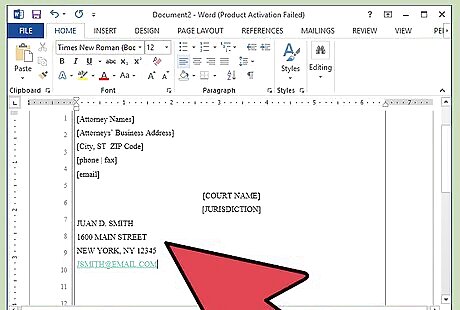
Provide your personal information. If you are not using letterhead with your name and address, provide your personal information to identify yourself. In the top left, write your: Name Address City, state, and zip code Telephone number and/or email address

Date the letter. Leave a blank line, then type the date on which you are writing the letter. At the very top of the letter, put the date on which you write the letter. Write out the date rather than abbreviating it. For example, use "September 9, 2015" instead of "9/9/15"
Addressing the Letter to the Judge

Write the inside address. The inside address includes the recipient's full name, title, and address. Leave a blank line below the date, then write the name and address of the judge. Use the judge's professional address, which is typically the courthouse in which he or she presides. For example: The Honorable [Full Name], Judge of the Superior Court of Stanislaus County, 1100 I Street, Modesto, CA 95354.
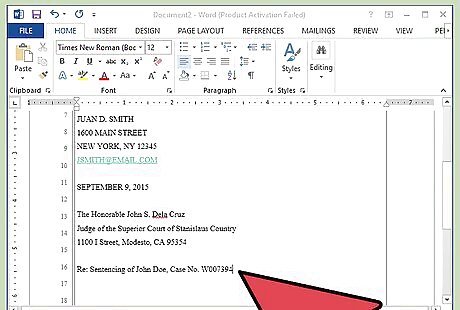
Indicate what the matter is regarding. Beneath the inside address, let the reader know the subject of your letter. Use "Re:" (an abbreviation for "regarding" or "with reference to"), followed by a short phrase. For example, "Re: Sentencing of John Doe, Case No. W007394"
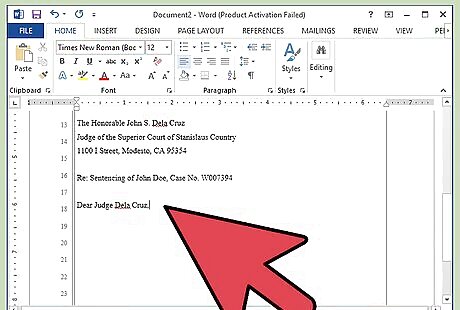
Open with a salutation. Write "Dear Judge (last name)," to start your letter. Note that you use "the Honorable" when referring to the judge, but use "Judge" when addressing him or her in person. The title still applies even if the judge has retired. The term "Dear" is always appropriate in a business context, and does not mean that the person is dear to you. It is simply a proper opening salutation.
Writing the Contents of the Letter
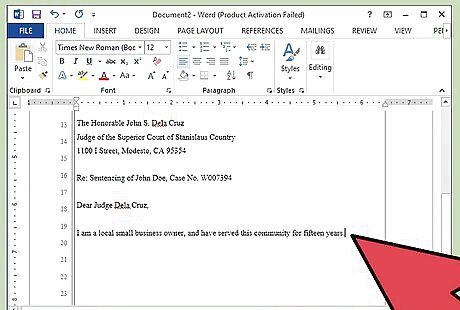
Identify yourself and state your profession. In the first paragraph of the letter, begin by introducing yourself and saying what your profession is. Do not be modest about your credentials, particularly if you are held in high esteem in your community because of your professional or private work. Building yourself up is particularly helpful if you are writing on behalf of a defendant, it shows that the defendant has a positive relationship with a respected and productive member of the community. For example, "I am a local small business owner, and have served this community for fifteen years."
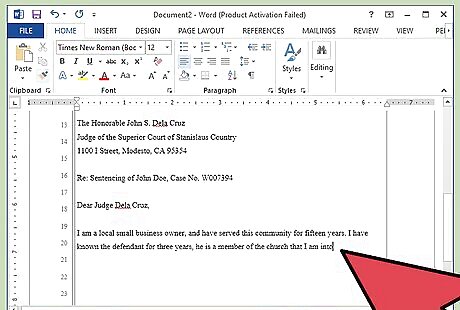
State your interest in the case. Your next sentence should specify what interest you have in the case you are writing about. For instance, you might state how long you have known the defendant, and whether he or she is a friend, relative, member of your church, etc.
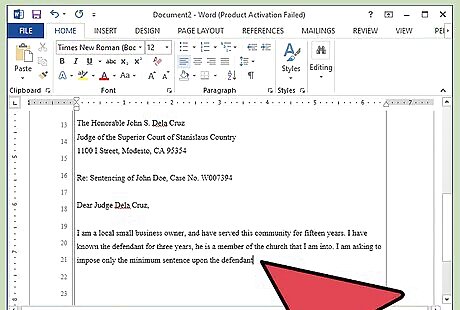
Tell the judge what you want. Succinctly describe what action you would like the judge to take. For example, "I ask that you please impose only the minimum sentence upon the defendant."
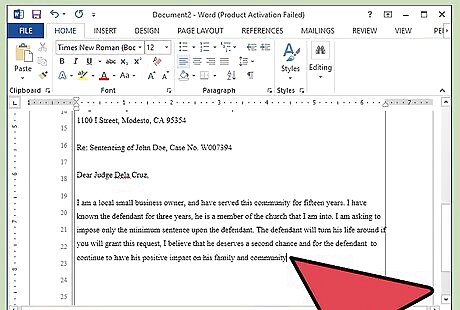
Give reasons why the judge should grant your request. You need to persuade the judge to agree to your request. For example, if you are asking the judge to impose only a minimum sentence on the defendant, explain why the defendant will turn his or her life around, why you believe he or she deserves a second chance, and how the defendant can continue to have a positive impact on his or her family and community. Take as much space as you need for this section, but not more than you need. Judges are very busy, and will appreciate letters that are well-edited. Put your strongest arguments first, and phrase your arguments as briefly as you can.

Proofread your letter. Once you have finished, re-read your letter several times, and have someone else read it for you. Make sure your letter is easy to understand and free from errors. Once your letter is as straightforward, succinct, and error-free as you can make it, you are ready to send it.




















Comments
0 comment